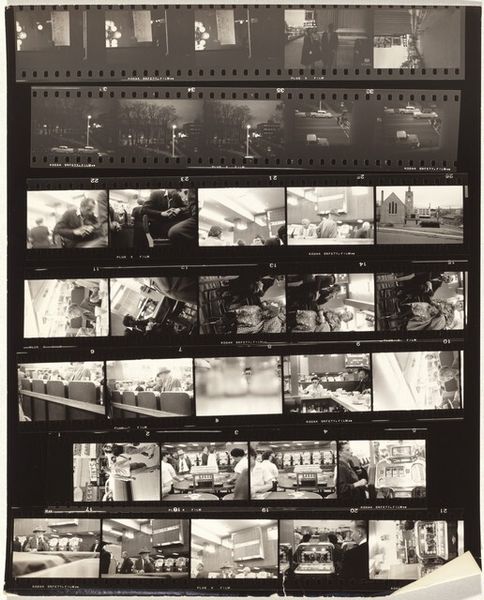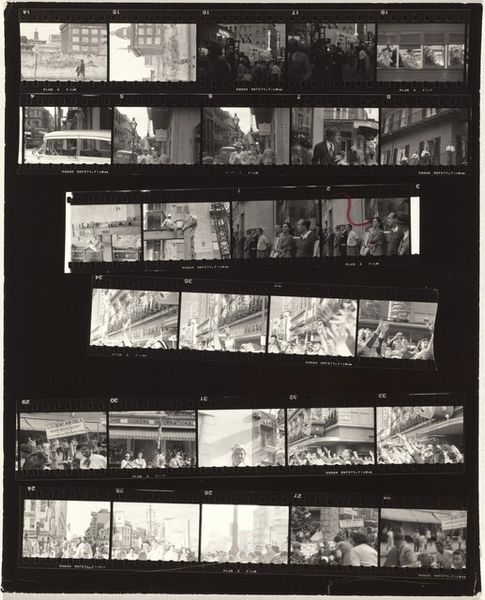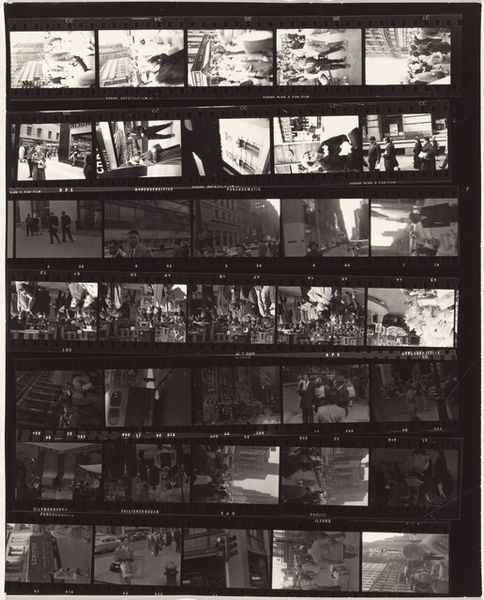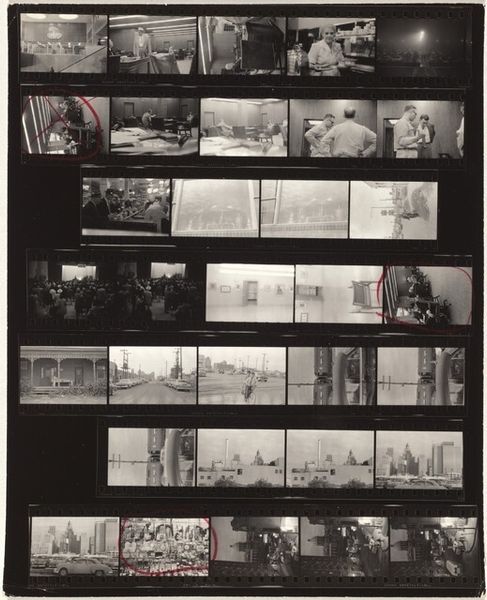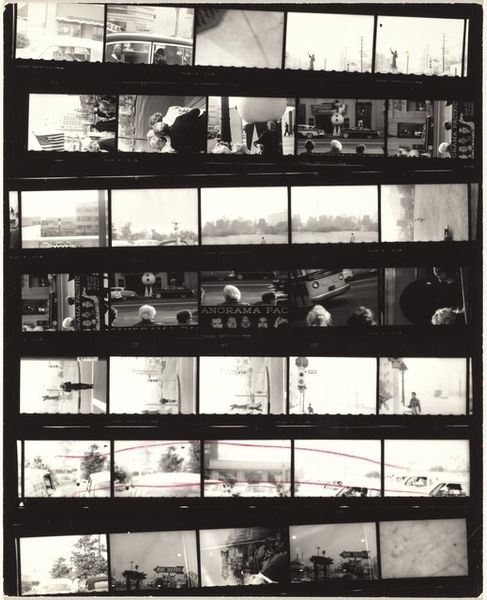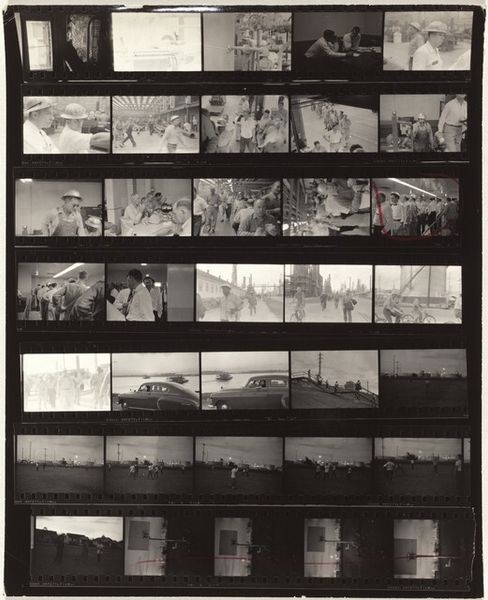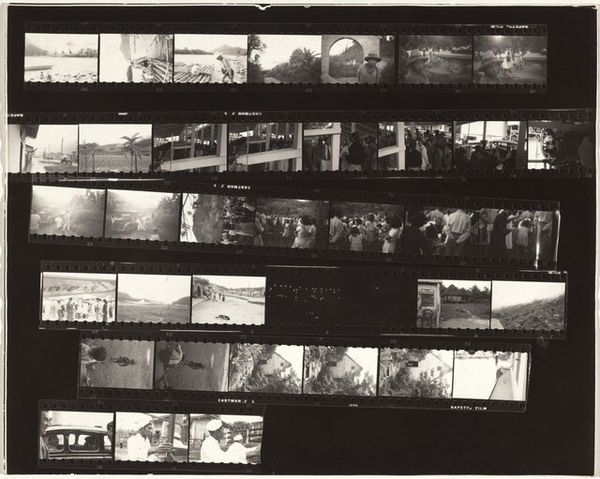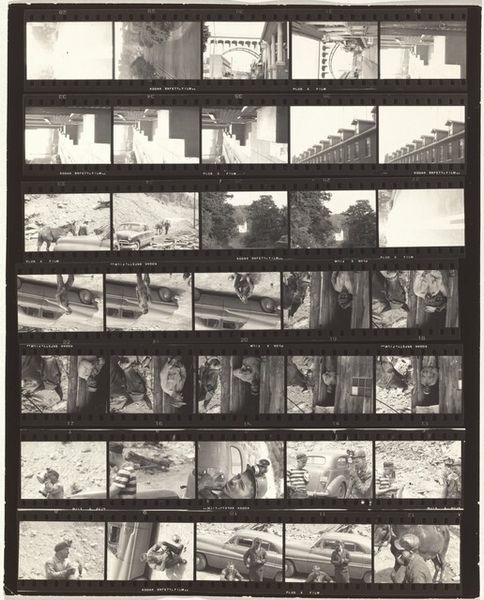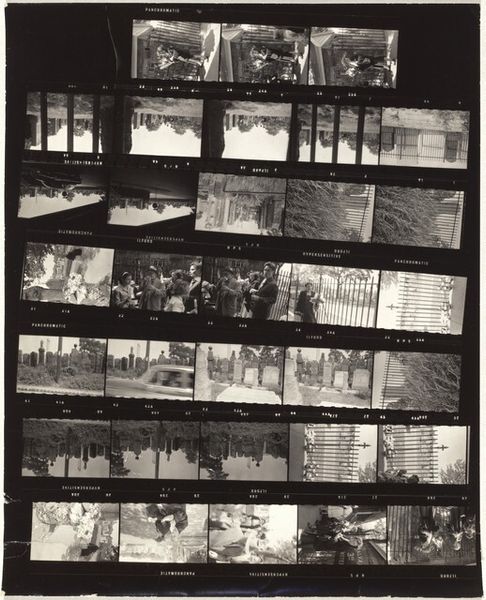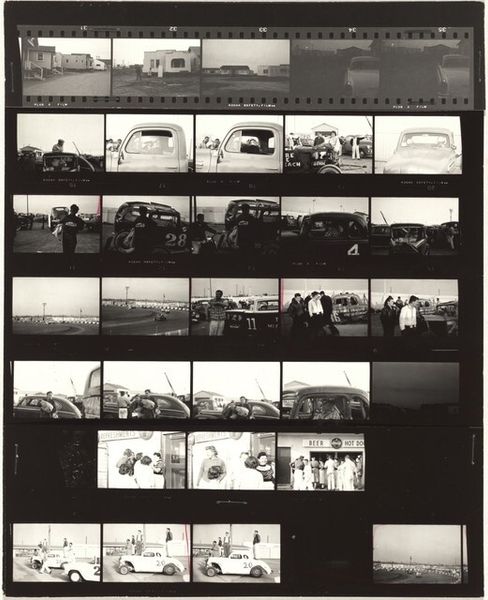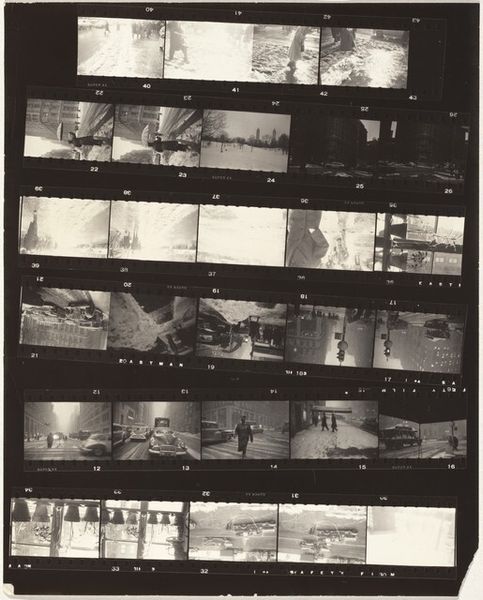
Dimensions: overall: 25.4 x 20.5 cm (10 x 8 1/16 in.)
Copyright: National Gallery of Art: CC0 1.0
Curator: This gelatin silver print, titled "Guggenheim 560--Los Angeles" was captured by Robert Frank in 1956. What’s your first reaction to this striking series of images? Editor: Initially, it feels like peering into someone's memories, fragmented yet strangely cohesive. There’s a cinematic quality, a sense of stories unfolding. A somber feeling overall, don't you think? Curator: It’s interesting that you describe it as memories, it evokes exactly the feeling that Frank wanted to communicate: cultural memory, through familiar symbols, with an emotive impact that hits straight to the collective imagery. The Guggenheim referenced in the title alludes to the artist’s application for a grant. Editor: So, a visual grant application, a series of vignettes! Knowing this helps re-contextualize the string of images. Suddenly the photograph takes another role, as some sort of urban planning representation and documentary. Are there visual motifs connecting the disparate scenes? Curator: There is a focus on street photography that seems to recur as a connecting element throughout the frame series, along with architectural themes and a prevalent use of black and white tonality which brings a feeling of loneliness. Frank developed a unique style characterized by spontaneity and a candid approach to street photography, diverging from the more formal style predominant then. Editor: I find it fascinating how those monochrome tones and snapshot-like compositions can distill such complex social narratives. He truly transformed mundane scenes into potent social commentary. And also there is a certain similarity to cinema stills. Do you agree? Curator: Indeed! By choosing photography as the primary tool, and a fragmented approach to street representation he offered to America and the rest of the world a social criticism that still feels quite relevant today. But beyond any conceptual implication, there is the powerful presence of light itself. Editor: Well said. It really does transcend just a string of pictures—it's a poignant visual poem. I will certainly reconsider it when passing by an exhibition with Robert Frank’s artworks. Curator: Precisely, an opportunity to not only look, but feel. And now hopefully, our listeners can too.
Comments
No comments
Be the first to comment and join the conversation on the ultimate creative platform.
